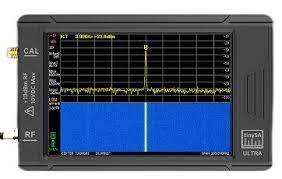
Spectrum Management, Small Unit Tactics and the Next Generation
Share
I was once asked, years ago, to define what the small unit actually was. The person asking was intensely well qualified, mind you, far more than I, to comment on the subject. Having had a distinguished career in several of the Special Forces Groups, his question lay not in probing my own knowledge but making me think. Following an engaging thought experiment he stated “I sometimes wonder if what we were taught all these years was wrong”. His rationale lay with tactics, and the underlying training doctrine, remaining in stasis.
I happen to agree – tactics and task organization do not exist in a vacuum, rather, they thrive in a constant state of evolution. Tactics are that strategy you employ to successfully complete a task. Task organization is how you manage your resources. Taking into account the multitude of resources developing on the modern battlefield on vibrant display today, there is a strong case to be made for a new revolution in not just how we mitigate the evolving risks but integrate them into our own order of battle.
Another close friend and mentor who happened to be an Infantry Company Commander in Vietnam once noted the proliferation of night vision and thermal for hunting use. Just twenty years ago that would be out of the price range of most, but its commonplace now. NODs revolutionized tactics for a time. While there is a case to be made for the underlying skill – development of natural night vision and spatial awareness sans a set of NODs – it would be idiotic to suggest they are not a requirement on the modern battlefield in any capacity. Proper employment has a learning curve, as does the equipment needed. The debate over passive versus active aiming will likely continue to rage, but it will not go away. The equipment is here and the tactics must evolve lest we find ourselves at a disadvantage.
To a far larger extent is the proliferation of Thermal Imagers in smaller and smaller sizes making small unit integration seamless. Just a decade ago thermal was clunky, heavy, and had a short battery life. Not anymore. It has become a requirement for observation purposes day and night to have that piece of equipment on a patrol. But even more importantly is the measures to safeguard that same patrol from an adversary using it. Both are a product of the Global War on Terror with the tactics evolving to mitigate their presence a reflection of their proliferation on both sides of a future conflict. We now see those results in Ukraine.
This leads us to drones. There can be no doubt, taking into account the lopsided victories of the Azeris in Nagorno-Karabakh once the Israeli drones were fielded, that the use of drones is the greatest game changer at the macro level to date, be it armed birds with a payload or small units for local Intelligence, Surveillance, and Reconnaissance (ISR). The presence of cheap technology is forcing the way we think of small unit warfare, be it the conventional linear meat grinder we are observing in Ukraine or the continuing brooding asymmetric war here at home. Just as we view the guy with the iron sighted AR-15 as well behind the power curve, in the near future the same will be said of the lack of enablers discussed here.
I go back to the statement in the first paragraph…what if what we were taught was wrong. Certainly gives one pause to wonder, taking for granted all the buzzwords that gave us comfort. Terms like “frequency hopping” and “encryption”, absent the necessary defining details. What if what we were taught regarding communications, at the small unit level, was not just wrong, but will get people killed on the modern battlefield? It is an incredibly valid question. We took for granted those terms above for far, far too long, generating a ridiculous level of hubris. The Russians have demonstrated a rather formidable electronic warfare capability, even if falling a bit shorter than expected in some cases. But the idea of frequency hopping in the 30-88mHz range was intended to prevent jamming, not interception. And the encryption itself, while still secure, is nearly 30 years old, mitigating neither interception nor detection of the signal. The use of that particular portion of the spectrum for military ground communications and that specific waveform, easily identifiable to those with even cheap equipment, instantly fingerprints a unit’s presence.
To make matters worse, thinking has hinged upon greater use of the RF spectrum to create geospatial awareness. Something that has a better name – micromangement – in an attempt to integrate all of the communications between air and ground elements pipelined straight to the Ground Force Commander. Sounds great, except that in practice it cannot account for the amount of RF generated and easily exploited by those with the capability. As an aside, this equipment is meant for conventional forces, no matter how special the unit fielding it claims to be. All the buzzwords cannot account for the fact that a consistent signal emission with a unique and repeated pattern is a serious problem. What we were taught was wrong and nothing has been done to change the way we train, making the age-old assumption the next war will be the same as the last.

Early in the Russian invasion of Ukraine much chatter was made of the Russian conventional forces’ use of Baofeng radios – simple analog, little else. Why were they not fielding the new Azart radio system? Maybe they can’t field it…not enough to go around. Perhaps. The Russian bear is not so strong after all and assorted other overconfident statements. I’m not particularly a fan of bravado ignoring our embarrassing exit from Afghanistan just over a year ago. But little consideration was made to another factor: the Azart, with its NXDN digital protocol, may be mistaken for the Ukrainian use of DMR for tactical communications. This would become a serious problem for electronic warfare groups tasked with coordinating first the location of enemy units (based on their electronic signature) and second to hammer them with indirect fire. The confusion of two similar systems in danger close proximity is the same as shooting it out within a couple hundred meters – it negates one side’s ability to use airpower or artillery without killing its own. It was certainly not a perfect solution and caused many of its own problems. But then again, this is always the case. Early in the GWOT US forces unofficially made use of many Motorola FRS radios to free up bandwidth until it was formally banned due to the threat of triggering IEDs. I remember it well.
Cheap technology in the form of spectrum analyzers and SDR is making the task of signals intelligence faster, easier and more streamlined than ever before. The ability to have an inexpensive and small device gives a new capability to the team on the ground. Hunt the signal, kill the Unit emitting it. And that leads us back to our fundamental point. Management of the RF emissions of a small unit is every bit as important as considerations to thermal protection and operating at night. To make matters more complicated, communications is the most intangible, and in turn most misunderstood, of those skills. Worse yet is the US propensity for micromanagement at the small unit level. It is a lesson being learned the hard way for both sides in Ukraine, but one that only a single side apparently seems to draw its lessons. In the end, regardless of the nature of the conflict, asymmetric or conventional, management of the RF spectrum will be necessary for a unit’s survival. Just as with the proliferation of NODs, thermal and cheap drones, the fielding of inexpensive equipment in innovative ways will win that fight.
Not buzzwords.
